There it was again… the strange noise punctuating my morning of Zoom calls. A short, high-pitched wail coming from the tops of the eucalyptus trees that separate our house from the neighbors.
I spend many of my conference calls gazing out of the window, watching rainbow lorikeets and king parrots cavorting in the branches. But on this particular morning, something else was sitting in the tree-tops.
Peering around my computer monitor, I see a fuzzy, grey ball perched precariously in the thin, upper branches of the tallest tree. Then a large, black-and-white currawong swoops in, buffeting the furball with beak and wings in an attempt to defend its nearby nest. Another wail, and the furball swats at the bird in protest.
It’s a koala. In my backyard.
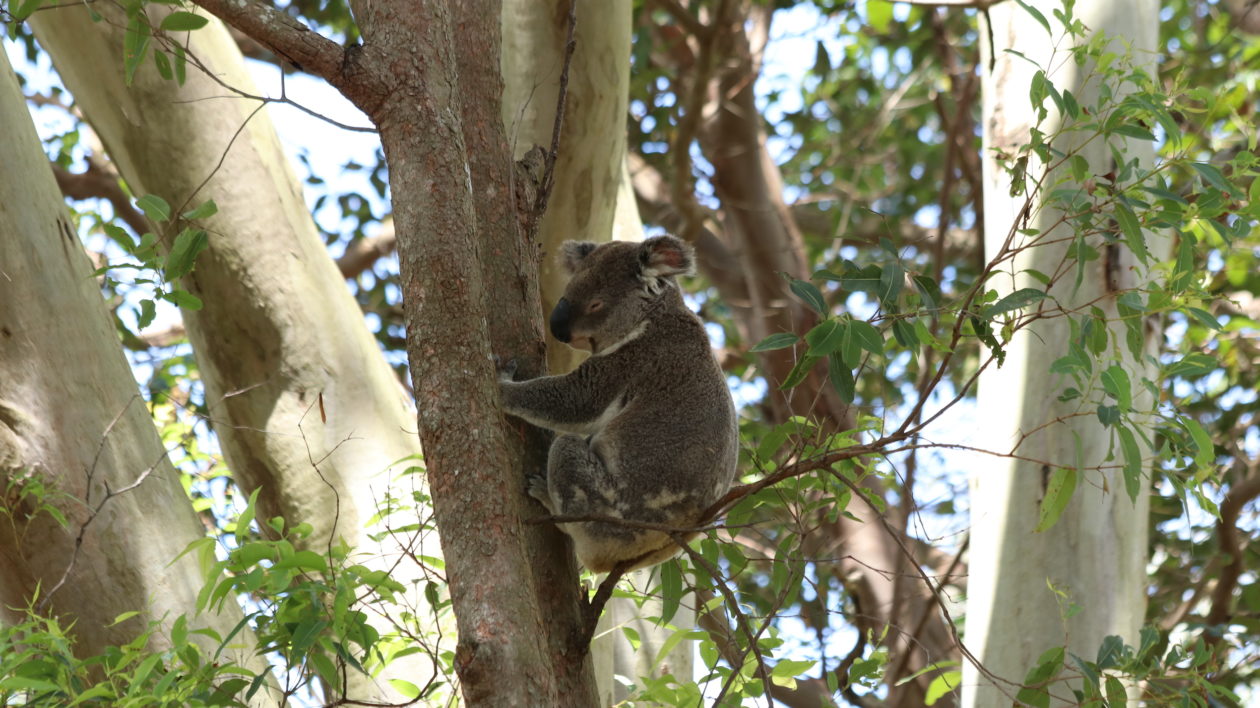
When I moved to Australia three years ago, even the most mundane backyard wildlife was mesmerizing. Bug-eyed possums trundled along my roof at night, rainbow-colored parrots screeched me awake each morning, and prehistoric-looking brush turkeys prowled the sidewalks. The change of scenery allowed me to re-discover my appreciation for backyard wildlife, which I’d written off as ordinary and unexciting. In a country where every species was new and excotic, my city backyard was as thrilling as the wilds of Borneo.
My backyard wildlife got a little more wild when I traded the city for the country and moved to a quiet town an hour north of Brisbane. Just a few weeks earlier, I found a 9-foot-long carpet python in my front yard.
But a backyard koala? This was starting to get ridiculous.
After a night of thunderstorms the koala disappeared, retreating from the avian harassment to a larger grove of native bush at the end of our street. Our little cluster of eight houses is perched on the edge of an east-facing ridge. A road switchbacks up the steep slope below us, hidden from view by this small strip of remnant bush that runs from the flat land below up to the bottom of our street.
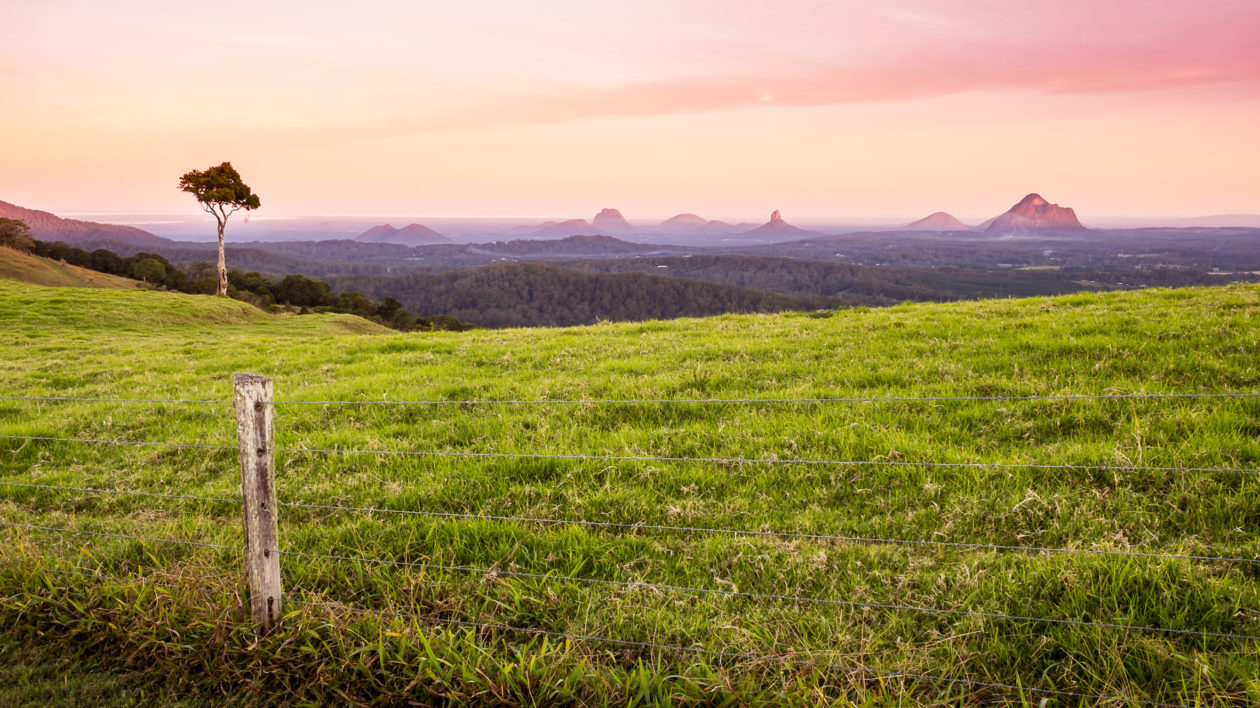
We knew the koala was still nearby. Late at night he’d serenade the neighborhood with his territorial mating calls, only to repeat the performance before dawn. If you’ve never heard a koala before, brace yourself. These cute, cuddly, endearingly anthropomorphic creatures let forth a guttural roar that sounds like a rabid wild boar swallowed a chainsaw.
The koala kept this up for weeks. Every few days the neighborhood text chain would light up with a sighting — “He’s in the close tree this morning!” — and we’d walk down the street to search for him in the treetops. For the little girl who idolized Steve Irwin, a koala was the peak of Australian backyard wildlife.
But as the weeks wore on, my excitement gradually turned to sadness. Our tiny, remnant patch of forest, cut by a zigzagging road and hemmed by yards with dogs — is the last place this koala should be. And his nightly bellowing reminded me that my backyard koala wasn’t something to celebrate — it was a sign of his species’ plight.
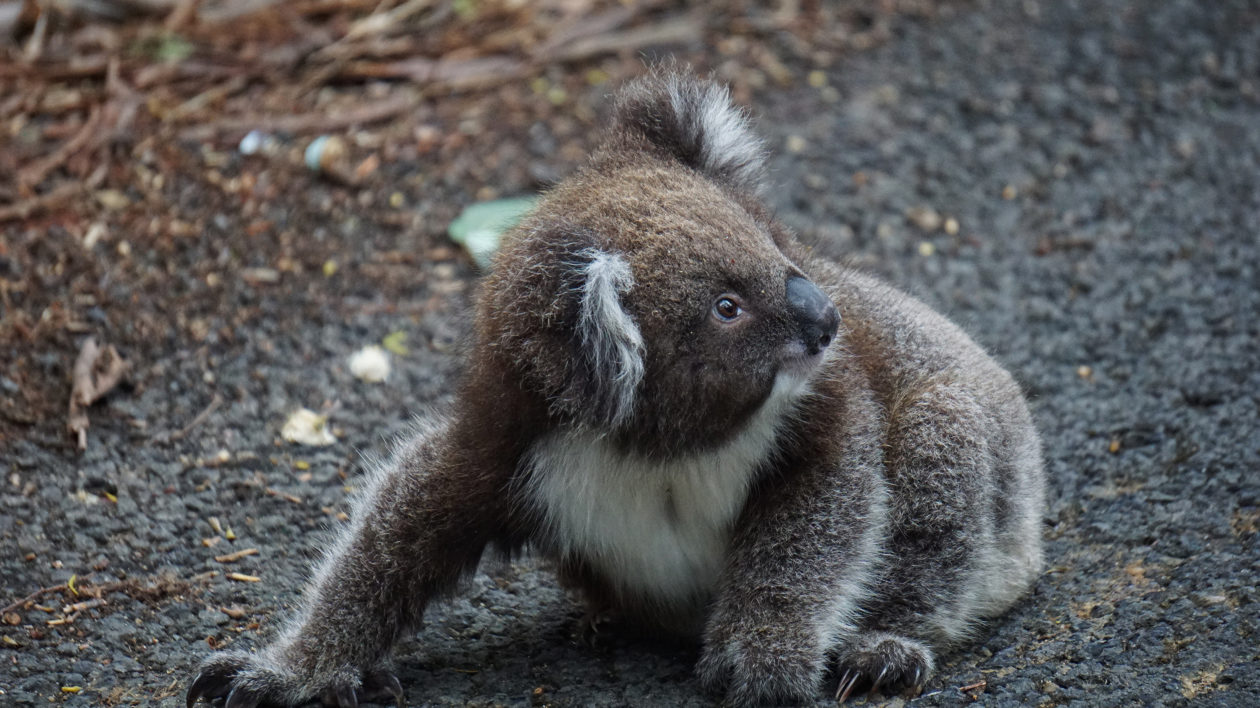
We don’t have a good handle on the koala population prior to European settlement, but researchers do know how many were slaughtered in the following decades. From the late 1800s to the 1920s, hunters killed tens of millions of koalas for their fur. Researchers estimate that the harvest hovered between 450,000 and 1 million koala skins each year. Hunting ceased in the 1930s, with the help of US President Herbert Hoover, but the population never recovered.
Scientists estimate that there are about 329,000 wild koalas in eastern Australia as of 2012 — less than one year’s annual harvest during the fur trade years.
Today, habitat loss is the most pressing threat. (As one Australian scientist put it: “‘If they haven’t got a tree, nothing else matters.’”) Few people outside of the country recognize that Australia is a global deforestation hotspot, with rates on par with the Amazon or Congo Basin. Land clearing for urban development, agriculture, and grazing land eats away at the forests. As suburbs and farms cut koalas off from one another, science shows that their populations are becoming genetically isolated.
Where koala habitat abuts backyards like my own, koalas are hit by cars or attacked by dogs. Many populations are plagued by chlamydia. And climate change is set to inflict its own horrors: extreme temperatures, drought, and increased bushfires are killing both koalas and the forests they need to survive.
Faced with all these threats, it’s entirely unsurprising that a majority of koala populations are in decline. For example, a 2016 report found that koalas around Brisbane declined by 80 percent in just 20 years.
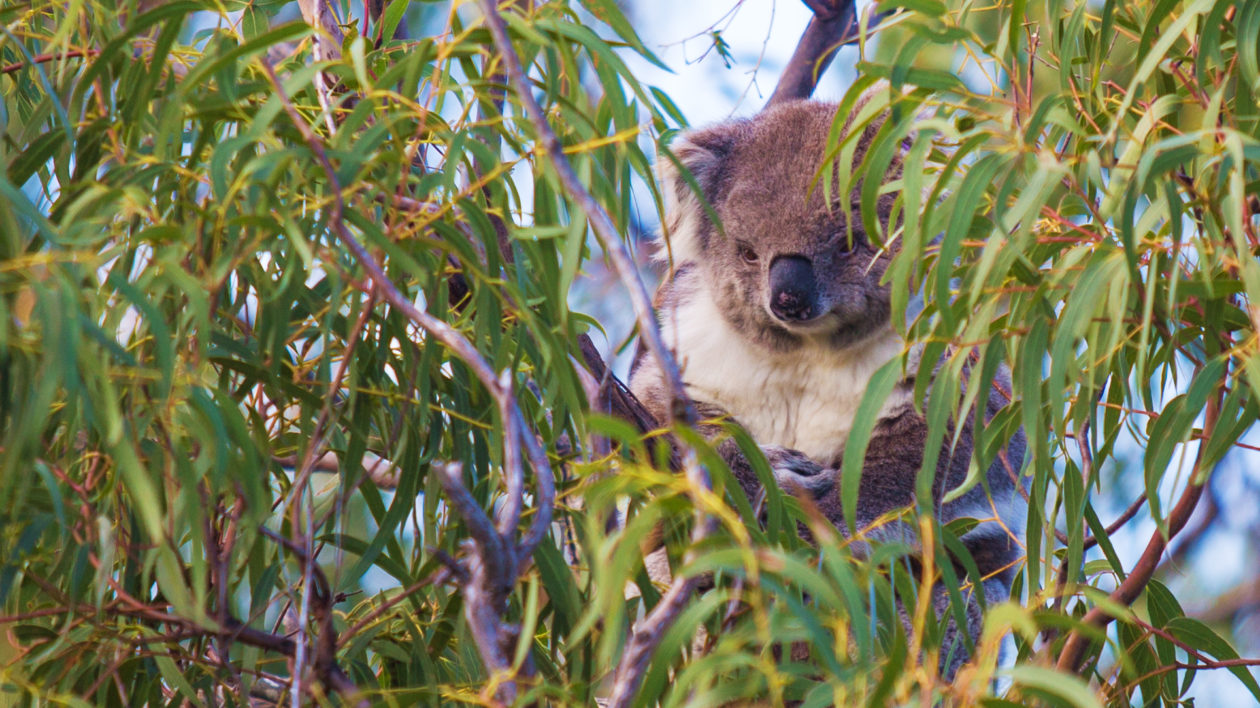
Guilt mingles with joy each time I hear the koala’s distant roar. I moved out of the city to be closer to nature, but that very impulse is what drives urban development on the wild fringe. As a conservationist, how do I cherish the wildlife outside of my window, when my desire to be near nature results in habitat loss?
Our neighborhood is 20 years old — so my guilt is assuaged somewhat — and yet I’m still troubled by the thought of celebrating backyard wildlife when our need for backyards destroys native habitat. The koala is only here because he doesn’t have anywhere better to go.
And what about urban wildlife? We celebrate the species that have learned to live alongside us in cities and suburbs, the coyotes and Carolina wrens, the chipmunks and brush-tailed possums. But is it wrong to celebrate these rare ecological winners, when so many species that should be here have long since disappeared? For every species I tally on my yard list, there are likely a dozen others that would be here, if the land were still wild.
There are no easy answers to these questions. But the koala forces me to ask them.
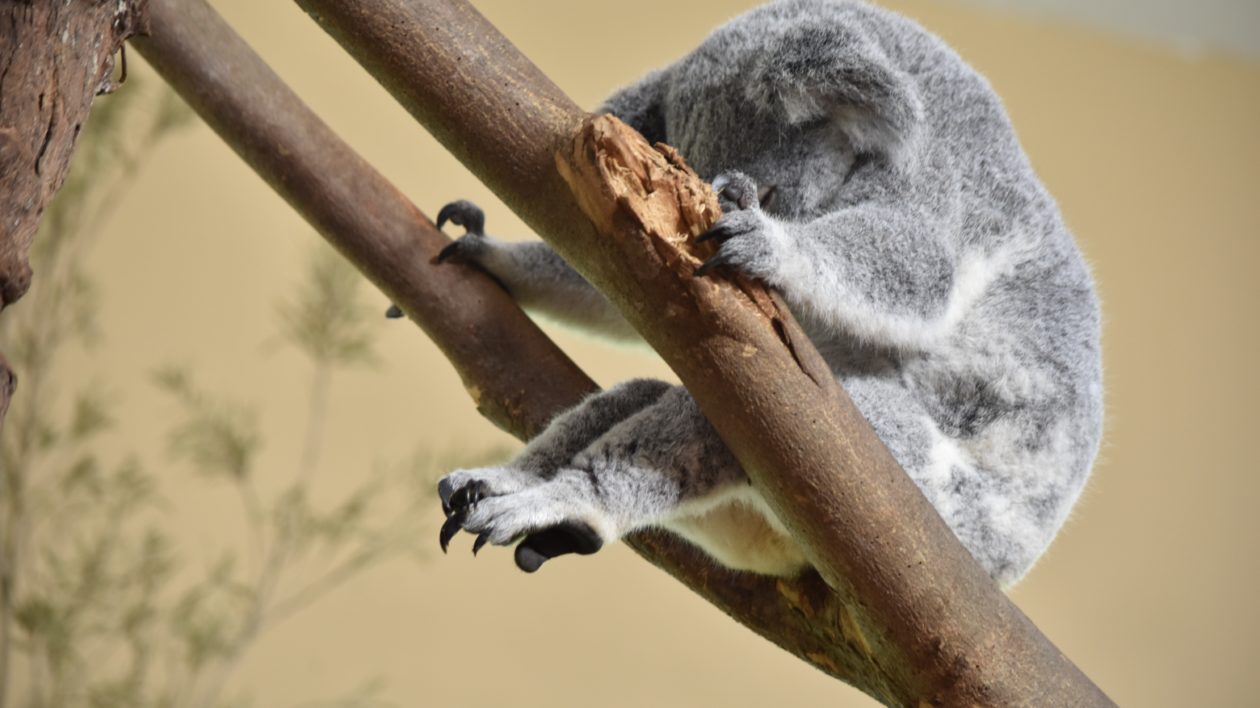
We can’t turn back the clock on the Anthropocene, and so we (and wildlife) must make do with what we’ve wrought.
Without backyards, many species would have even less habitat. In my area, a large amount of the remaining koala habitat isn’t in national parks or conservation preserves, but on private land.
Without wildlife skulking through my childhood backyard, I might not be a conservationist. One of my deepest-held beliefs is that a love of nature is innate to the human species. Biophilia, as E.O Wilson called it, is in our bones. But it often takes a backyard to bring biophilia to life.
And without my backyard critters — the koala and parrots, pythons and giant goannas — my life would be so much less rich. Watching wildlife outside my window carried me through grief and sorrow more times than I can count, this year and before.
After two months, a second koala arrived. For just a few nights the evening serenade was a duet, the male’s bellows accompanied by the distinctive shrieks of the female during mating. I’d stay up late, listening to their caterwauling as mosquitoes feasted on my ankles in the dark summer night.
Conservation can seem bleak, even more so these days. But my backyard koalas remind me why I’m fighting.




A sweet story, but as you’ve pointed out it is a sad truth of what is happening to global species loss.